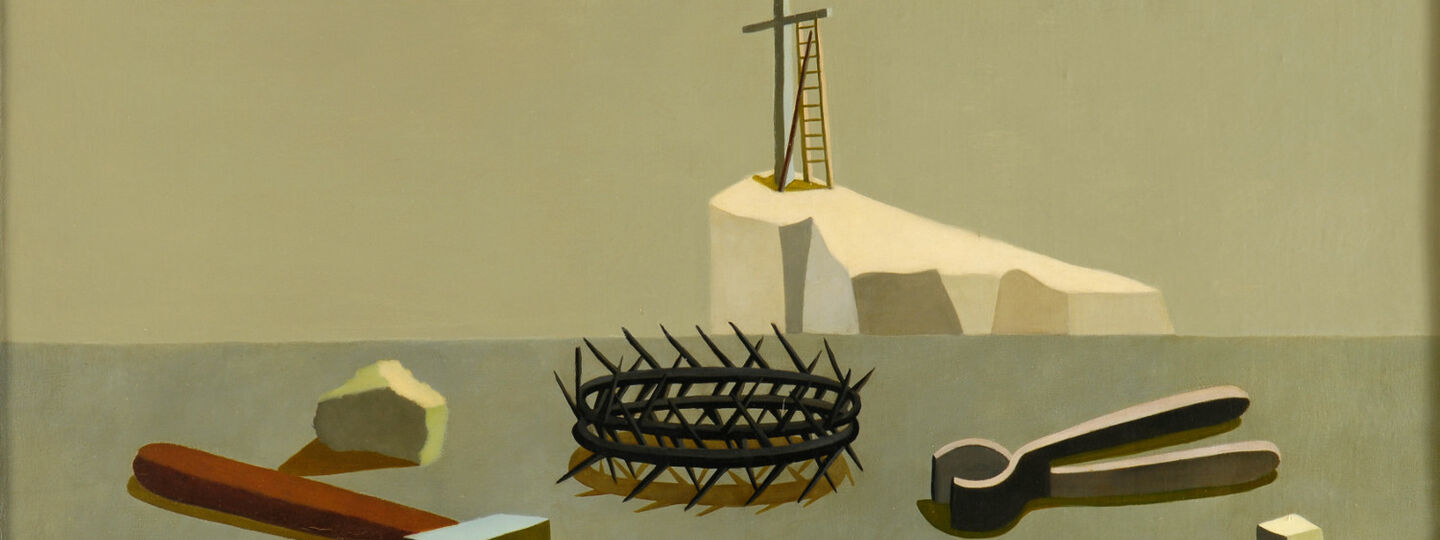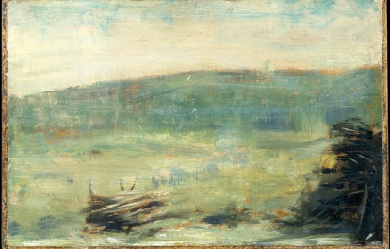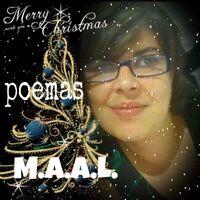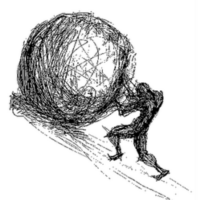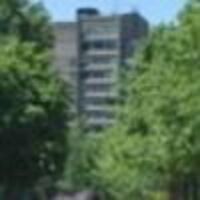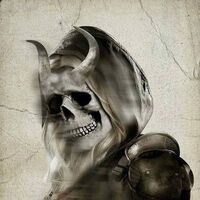
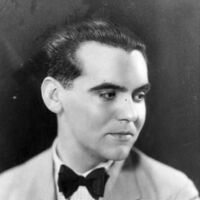
Federico García Lorca (Fuente Vaqueros, Granada, 5 de junio de 1898 – entre Víznar y Alfacar, ibídem, 18 de agosto de 1936) fue un poeta, dramaturgo y prosista español, también conocido por su destreza en muchas otras artes. Adscrito a la llamada Generación del 27, es el poeta de mayor influencia y popularidad de la literatura española del siglo XX. Como dramaturgo, se le considera una de las cimas del teatro español del siglo XX, junto con Valle-Inclán y Buero Vallejo. Murió ejecutado tras la sublevación militar de la Guerra Civil Española, por su afinidad con el Frente Popular y por ser abiertamente homosexual.
Extraviada entre las dudas punzantes por las verdades escritas sobre las crestas del mar, vengo a encontrar algún color de paz. Aqui os iré dejando los que sean mis poemas favoritos de otros autores... Benjamín Prado Mira cómo funciona el negocio de la desigualdad: para que sigan llenas algunas cajas fuertes, tiene que haber millones de neveras vacías. Santiago Cerro Ella no olvida que el sol le da la vida. La luna lo ama. Estefanía Cabello (Córdoba, 1993) Los hombres nunca entendieron mi preferencia por los bosques y el mar y empecinados comentaban sus victorias en voz alta, sus planes de futuro, la lista de todas las cosas que debía cambiar antes de que fuera demasiado tarde. Desde chiquita la naturaleza siempre ejerció un gran poder de atracción sobre mí (mucho más que el de esas personas que ejercían su opinión a voces). Enrique Gracia Trinidad (Madrid, 1950) No No hay bandera que valga un solo muerto No hay fe que se sujete con el crimen. No hay dios que se merezca un sacrificio. No hay patria que se gane con mentiras. No hay futuro que viva sobre el miedo. No hay progreso que exija la injusticia. No hay tradición que ampare la ignominia. No hay honor que se lave con la sangre. No hay razón que requiera la miseria. No hay paz que se alimente de venganza. No hay voz que justifique una mordaza. No hay justicia que llegue de una herida. No hay libertad que nazca en la vergüenza. Más info en https://linktr.ee/gracecristina
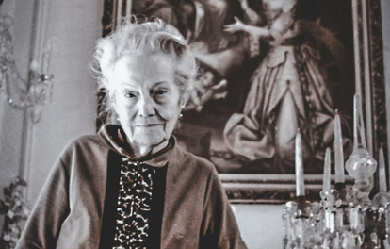
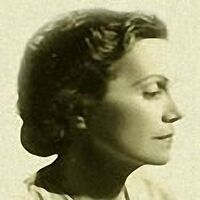
Dulce María Loynaz Muñoz (La Habana, Cuba; 10 de diciembre de 1902-Ibidem; 27 de abril de 1997) fue una escritora cubana, considerada una de las principales figuras de la literatura cubana y universal. Obtuvo el Premio Miguel de Cervantes en 1992. Publicó sus primeros poemas en La Nación, en 1920, año en que también visitó los Estados Unidos. A partir de esa fecha realizó numerosos viajes por Norteamérica y casi toda Europa, incluyendo visitas a Turquía, Siria, Libia, Palestina y Egipto. Visitó México en 1937, varios países de Sudamérica entre 1946 y 1947 y las Islas Canarias en 1947 y 1951, donde fue declarada hija adoptiva.
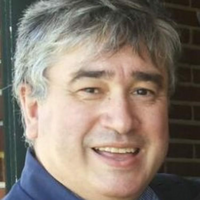
Escribo para el no tiempo, para un presente sin ausentes donde todos comprenden la Cancion de la Luz ! Escribo para la Jerarquia que transformara la vida en la mas elevada consciencia. Escribo poemas que son puentes al Infinito. Escribo por que escribiendo vivo Escribo y cada palabra que escribo es un latido De mi corazón rendido al eterno Amor Escribo a sabiendas de que mucho de lo que Escribo no será bien comprendido Pero igual lo escribo Luis - Poesía Esotérica
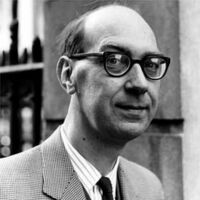
Philip Arthur Larkin (9 August 1922 – 2 December 1985) was an English poet and novelist. His first book of poetry, The North Ship, was published in 1945, followed by two novels, Jill (1946) and A Girl in Winter (1947), but he came to prominence in 1955 with the publication of his second collection of poems, The Less Deceived, followed by The Whitsun Weddings (1964) and High Windows (1974). He was the recipient of many honours, including the Queen's Gold Medal for Poetry. He was offered, but declined, the position of poet laureate in 1984, following the death of John Betjeman.
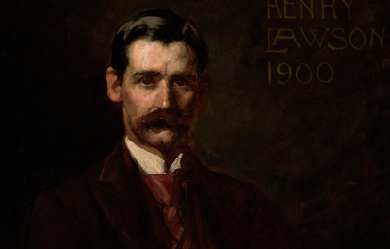
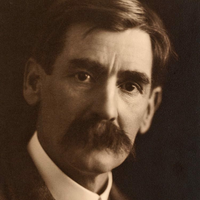
Henry Archibald Hertzberg Lawson (17 June 1867 – 2 September 1922) was an Australian writer and poet. Along with his contemporary Banjo Paterson, Lawson is among the best-known Australian poets and fiction writers of the colonial period and is often called Australia's “greatest short story writer”. He was the son of the poet, publisher and feminist Louisa Lawson.
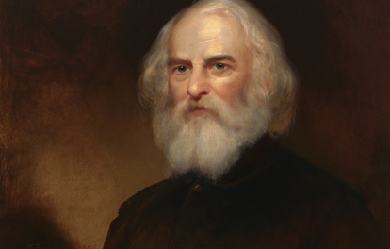
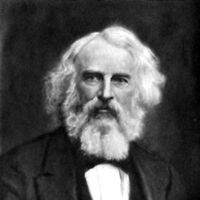
Henry Wadsworth Longfellow (February 27, 1807 – March 24, 1882) was an American poet and educator whose works include "Paul Revere's Ride", The Song of Hiawatha, and Evangeline. He was also the first American to translate Dante Alighieri's The Divine Comedy and was one of the five Fireside Poets. Longfellow was born in Portland, Maine, then part of Massachusetts, and studied at Bowdoin College. After spending time in Europe he became a professor at Bowdoin and, later, at Harvard College. His first major poetry collections were Voices of the Night (1839) and Ballads and Other Poems (1841). Longfellow retired from teaching in 1854 to focus on his writing, living the remainder of his life in Cambridge, Massachusetts, in a former headquarters of George Washington. His first wife, Mary Potter, died in 1835 after a miscarriage. His second wife, Frances Appleton, died in 1861 after sustaining burns from her dress catching fire. After her death, Longfellow had difficulty writing poetry for a time and focused on his translation. He died in 1882.

Rare & Strange...Lover of Wine, Sports, Skulls, The Sun, All Things Fast, Giving & Taking Chances, People Watching, Music, Poetry, Animals, Dialogue, Sensuality, Sexuality, Passion & Passionate People, Confidence, Art, Movies, Conversations, Romance, Philosophy & Johnny Depp.....Watching movies that make you think - like A waking life or with great dialogue. It's all about the lighting... What makes us different, you & I? I'm on my life mission of seeking the strange, yet the similar, the one who will make me think, make me not think, who will drive me wild with words, passion and love. I wear my heart on my sleeve and won't stop to let the world take away my spirit. I refuse to settle even if it means I never stop ...but I know he's out there my eclectic twin soul who will love adventure, random rants, giving and caring for others, fitting in between the cracks with me and standing out in the crowd too. Intelligent and Cultured , both city and country lover, who will pack up run through the mountains taking random photos of cemeteries and visions in the clouds, who will jump on a horse and ride a wild ride with me...a best friend, a soul mate, the other half who inspires me and I inspire he and long talks with large glasses of wine and endless nights in electric passion ...tantric, twisted, non-judging just accepting each other completely, swallowing each other ...
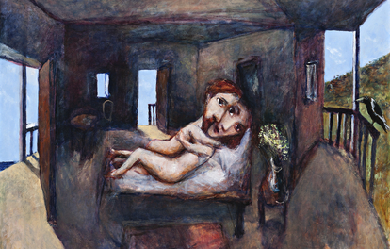
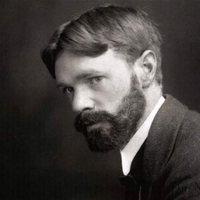
David Herbert Richards Lawrence (11 September 1885 – 2 March 1930) was an English novelist, poet, playwright, essayist, literary critic and painter who published as D. H. Lawrence. His collected works represent an extended reflection upon the dehumanising effects of modernity and industrialisation. In them, Lawrence confronts issues relating to emotional health and vitality, spontaneity, and instinct. Lawrence’s opinions earned him many enemies and he endured official persecution, censorship, and misrepresentation of his creative work throughout the second half of his life, much of which he spent in a voluntary exile which he called his “savage pilgrimage”. At the time of his death, his public reputation was that of a pornographer who had wasted his considerable talents. E. M. Forster, in an obituary notice, challenged this widely held view, describing him as, “The greatest imaginative novelist of our generation”. Later, the influential Cambridge critic F. R. Leavis championed both his artistic integrity and his moral seriousness, placing much of Lawrence's fiction within the canonical “great tradition” of the English novel. Lawrence is now valued by many as a visionary thinker and significant representative of modernism in English literature.
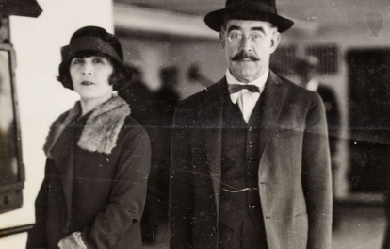
Leopoldo Lugones fue un poeta, ensayista, periodista y político argentino. Nació el 13 de junio de 1874 en la localidad de Villa María del Río Seco ubicada en el norte de la provincia de Córdoba, como el primer hijo de Santiago M. Lugones y Custodia Argüello. Decepcionado, precisamente, por las circunstancias políticas de la década de 1930 y quizás por su propia militancia, se suicida el 18 de febrero de 1938 en un hotel de Tigre, Buenos Aires, (llamado "El Tropezón") al ingerir una mezcla de cianuro y whisky.
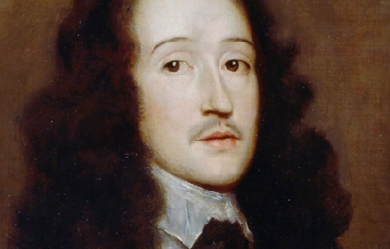
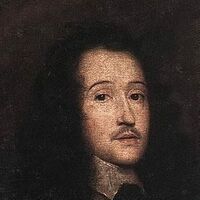
Richard Lovelace (1618–1657) was an English poet in the seventeenth century. He was a cavalier poet who fought on behalf of the king during the Civil war. His best known works are To Althea, from Prison, and To Lucasta, Going to the Warres. Early life and family Richard Lovelace was born in 1618. His exact birthplace is unknown, but it is documented that it was either Woolwich, Kent, or Holland. He was the oldest son of Sir William Lovelace and Anne Barne Lovelace and had four brothers and three sisters. His father was from an old distinguished military and legal family and the Lovelace family owned a considerable amount of property in Kent. His father, Sir William Lovelace, knt., was a member of the Virginia Company and an incorporator in the second Virginia Company in 1609. He was a soldier and he died during the war with Spain and Holland in the siege of Grol, a few days before the town fell. Richard was only 9 years old when his father died. Richard's father was the son of Sir William Lovelace and Elizabeth Aucher who was the daughter of Mabel Wroths and Edward Aucher, Esq. who inherited, under his father's Will, the manors of Bishopsbourne and Hautsborne. Elizabeth's nephew was Sir Anthony Aucher (1614 – 31 May 1692) an English politician and Cavalier during the English Civil War. He was the son of her brother Sir Anthony Aucher and his wife Hester Collett. Richard Lovelace's mother, Anne Barne (1587–1633), was the daughter of Sir William Barne and the granddaughter of Sir George Barne III (1532- d. 1593), the Lord Mayor of London and a prominent merchant and public official from London during the reign of Elizabeth I; and Anne Gerrard, daughter of Sir William Garrard, who was Lord Mayor of London in 1555. Richard Lovelace's mother was also the daughter of Anne Sandys and the granddaughter of Cicely Wilford and the Most Reverend Dr. Edwin Sandys, an Anglican church leader who successively held the posts of the Bishop of Worcester (1559–1570), Bishop of London (1570–1576), and the Archbishop of York (1576–1588). He was one of the translators of the Bishops' Bible. Anne Barne Lovelace married as her second husband, on 20 January 1630, at Greenwich, England, the Very Rev. Dr. Jonathan Browne They were the parents of one child, Anne Browne, who married Herbert Crofte, S.T.P. and D.D and were the parents of Sir Herbert Croft, 1st Baronet. His brother, Francis Lovelace (1621–1675), was the second governor of the New York colony appointed by the Duke of York, later King James II of England. He was also the great nephew of both George Sandys (2 March 1577 – March 1644), an English traveller, colonist and poet; and of Sir Edwin Sandys (9 December 1561 – October 1629), an English statesman and one of the founders of the London Company. In 1629, when Lovelace was eleven, he went to Sutton’s Foundation at Charterhouse School, then located in London. However, there is not a clear record that Lovelace actually attended because it is believed that he studied as a “boarder” because he did not need financial assistance like the “scholars”. He spent five years at Charterhouse, three of which were spent with Richard Crashaw, who also became a poet. On 5 May 1631, Lovelace was sworn in as a “Gentleman Wayter Extraordinary” to the King. This was an “honorary position for which one paid a fee”. He then went on to Gloucester Hall, Oxford, in 1634. Collegiate career Richard Lovelace attended Oxford University and he was praised by one of his contemporaries, Anthony Wood. for being “the most amiable and beautiful person that ever eye beheld; a person also of innate modesty, virtue and courtly deportment, which made him then, but especially after, when he retired to the great city, much admired and adored by the female sex" At the age of eighteen, during a three-week celebration at Oxford, he was granted the degree of Master of Arts. While at school, he tried to portray himself more as a social connoisseur rather than a scholar, continuing his image of being a Cavalier. Being a Cavalier poet, Lovelace wrote to praise a friend or fellow poet, to give advice in grief or love, to define a relationship, to articulate the precise amount of attention a man owes a woman, to celebrate beauty, and to persuade to love. Lovelace wrote a comedy, 'The Scholars,' and a tragedy titled 'The Soldiers,' while at Oxford. He then left for Cambridge University for a few months where he met Lord Goring, who led him into political trouble. Politics and prison Lovelace’s poetry was often influenced by his experiences with politics and association with important figures of his time. At the age of thirteen, Lovelace became a "Gentlemen Wayter Extraordinary" to the King and at nineteen he contributed a verse to a volume of elegies commemorating Princess Katharine. In 1639 Lovelace joined the regiment of Lord Goring, serving first as a senior ensign and later as a captain in the Bishops’ Wars. This experience inspired the 'Sonnet. To Generall Goring.' Upon his return to his home in Kent in 1640, Lovelace served as a country gentleman and a justice of the peace where he encountered firsthand the civil turmoil regarding religion and politics. In 1641 Lovelace led a group of men to seize and destroy a petition for the abolition of Episcopal rule, which had been signed by fifteen thousand people. The following year he presented the House of Commons with Dering’s pro-Royalist petition which was supposed to have been burned. These actions resulted in Lovelace’s first imprisonment. Shortly thereafter, he was released on bail with the stipulation that he avoid communication with the House of Commons without permission. This prevented Lovelace, who had done everything to prove himself during the Bishops’ Wars, from participating in the first phase of the English Civil War. However, this first experience of imprisonment did result in some good, as it brought him to write one of his finest and most beloved lyrics, 'To Althea, from Prison,' in which he illustrates his noble and paradoxical nature. Lovelace did everything he could to remain in the king’s favor despite his inability to participate in the war. Richard Lovelace did his part again during the political chaos of 1648, though it is unclear specifically what his actions were. He did, however, manage to warrant himself another prison sentence; this time for nearly a year. When he was released in April 1649, the king had been executed and Lovelace’s cause seemed lost. As in his previous incarceration, this experience led to creative production—this time in the form of spiritual freedom, as reflected in the release of his first volume of poetry, Lucasta. Literature Richard Lovelace first started writing while he was a student at Oxford and wrote almost 200 poems from that time until his death. His first work was a drama titled The Scholars. The play was never published; however, it was performed at college and then in London. In 1640, he wrote a tragedy titled 'The Soldier' which was based on his own military experience. When serving in the Bishops' Wars, he wrote the sonnet 'To Generall Goring,' which is a poem of Bacchanalian celebration rather than a glorification of military action. One of his extremely famous poems is 'To Lucasta, Going to the Warres,' written in 1640 and exposed in his first political action. During his first imprisonment in 1642, he wrote his most famous poem 'To Althea, From Prison.' Later on that year during his travels to Holland with General Goring, he wrote 'The Rose,' following with 'The Scrutiny' and on 14 May 1649, 'Lucasta' was published. He also wrote poems analyzing the details of many simple insects. 'The Ant,' 'The Grasse-hopper,' 'The Snayl,' 'The Falcon,' 'The Toad and Spyder.' Of these poems, 'The Grasse-hopper' is his most well-known. In 1660, after Lovelace died, "Lucasta: Postume Poems" was published; it contains 'A Mock-Song,' which has a much darker tone than his previous works. William Winstanley, who praised much of Richard Lovelace's works, thought highly of him and compared him to an idol; "I can compare no Man so like this Colonel Lovelace as Sir Philip Sidney,” of which it is in an Epitaph made of him; Nor is it fit that more I should aquaint Lest Men adore in one A Scholar, Souldier, Lover, and a Saint His most quoted excerpts are from the beginning of the last stanza of To Althea, From Prison: Stone walls do not a prison make, Nor iron bars a cage; Minds innocent and quiet take That for an hermitage and the end of To Lucasta. Going to the Warres: I could not love thee, dear, so much, Lov'd I not Honour more. Chronology 1618- Richard Lovelace born, either in Woolwich, Kent, or in Holland. 1629- King Charles I nominated “Thomas [probably Richard] Lovelace,” upon petition of Lovelace’s mother, Anne Barne Lovelace, to Sutton’s foundation at Charterhouse. 1631- On 5 May, Lovelace is made “Gentleman Wayter Extraordinary” to the King. 1634- On 27 June, he matriculates as Gentleman Commoner at Gloucester Hall, Oxford. 1635- Writes a comedy, The Scholars. 1636- On 31 August, the degree of M.A. is presented to him. 1637- On 4 October, he enters Cambridge University. 1638-1639- His first printed poems appear: ‘An Elegy” on Princess Katherine; prefaces to several books. 1639- He is senior ensign in General Goring’s regiment - in the First Scottish Expedition. “Sonnet to Goring.” 1640- Commissioned captain in the Second Scottish Expedition; writes a tragedy, The Soldier. He then returns home at 21, into the possession of his family’s property. 1641- Lovelace tears up a pro-Parliament, anti-Episcopacy petition at a meeting in Maidstone, Kent. 1642- 30 April, he presents the anti-Parliamentary Petition of Kent and is imprisoned at Gatehouse. After appealing, he is released on bail, 21 June. The Civil war begins on 22 August, he writes “To Althea, from Prison,” “To Lucasta.” In September, he goes to Holland with General Goring. He writes “The Rose.” 1642-1646-Probably serves in Holland and France with General Goring. He writes “The Scrutiny.” 1643- Sells some of his property to Richard Hulse. 1646- In October, he is wounded at Dunkirk, while fighting under the Great Conde against the Spaniards. 1647- He is admitted to the Freedom at the Painters’ Company. 1648-On 4 February, Lucasta is licensed at the Stationer’s Register. On 9 June, Lovelace is again imprisoned at Peterhouse. 1649- On 9 April, he is released from jail. He then sells the remaining family property and portraits to Richard Hulse. On 14 May, Lucasta is published. 1650-1657- Lovelace’s whereabouts unknown, though various poems are written. 1657- Lovelace dies. 1659-1660- Lucasta, Postume Poems is published. References Wikipedia - http://en.wikipedia.org/wiki/Richard_Lovelace
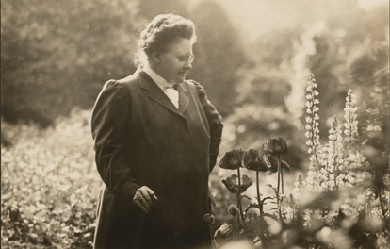
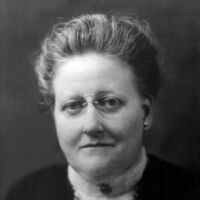
Amy Lawrence Lowell (February 9, 1874 – May 12, 1925) was an American poet of the imagist school from Brookline, Massachusetts, who posthumously won the Pulitzer Prize for Poetry in 1926. Amy was born into Brookline’s Lowell family, sister to astronomer Percival Lowell and Harvard president Abbott Lawrence Lowell. She never attended college because her family did not consider it proper for a woman to do so. She compensated for this lack with avid reading and near-obsessive book collecting. She lived as a socialite and travelled widely, turning to poetry in 1902 (age 28) after being inspired by a performance of Eleonora Duse in Europe.


I'm a social science student with an interest in philosophy, sociology and anthropology particularly. I would describe myself as a highly sensitive person but forever the optimist. Music is more than a hobby of mine, it is a way of life. I wear my heart on my sleeve and because of this I am a songwriter, musician and occasional poet. Instagram username- Marnoldkins
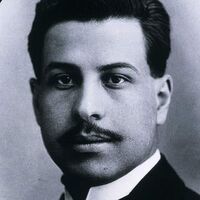
Ramón Modesto López Velarde Berumen (Jerez de García Salinas, Zacatecas, México, 15 de junio de 1888 – Ciudad de México, 19 de junio de 1921) fue un poeta mexicano. Su obra suele encuadrarse en el postmodernismo literario. En México alcanzó una gran fama, llegando a ser considerado el poeta nacional. Nació en Jerez, municipio del estado de Zacatecas, primero de los nueve hijos del abogado José Guadalupe López Velarde y Trinidad Berumen Llamas, de una familia de terratenientes locales.

Víctor Daniel López < VDL > Escritor | Poeta | Gestor Cultural Estudios en "Historia del Arte" y "Mitología Griega" por la Universidad del Claustro de Sor Juana, así como en cursos de Redacción, Creación Literaria y Crítica Narrativa en UNAM, El Péndulo y Casa del Lago Certificación en “Neurociencias y Arte” (MUNAL), "The Modern and the Postmodern" (Wesleyan University) y "Apreciación de la música clásica" (Yale University). Escritor de cuento, poesía, novela y crítica. Publicaciones en antologías de México, España y Argentina, así como redactor también en revistas mexicanas como "Revista Alegato", "La pluma del Ganso" y "Pueblos de la Mixteca". Miembro de la Academia Nacional de Poesía de la Ciudad de México. Autor de las novelas "El laberinto de don Artemio Bonilla" y "Sombras verdes: Hacia el último atardecer".
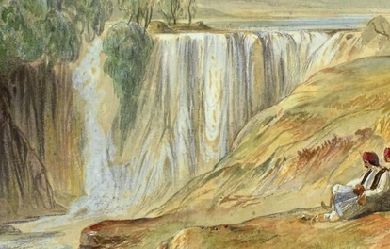
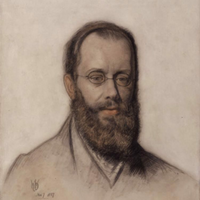
Edward Lear (12 or 13 May 1812 – 29 January 1888) was an English artist, illustrator, author and poet, and is known now mostly for his literary nonsense in poetry and prose and especially his limericks, a form he popularised. His principal areas of work as an artist were threefold: as a draughtsman employed to illustrate birds and animals; making coloured drawings during his journeys, which he reworked later, sometimes as plates for his travel books; as a (minor) illustrator of Alfred Tennyson's poems. As an author, he is known principally for his popular nonsense works, which use real and invented English words. Early years Lear was born into a middle-class family in the village of Holloway near London, the penultimate of twenty-one children (and youngest to survive) of Ann Clark Skerrett and Jeremiah Lear. He was raised by his eldest sister, also named Ann, 21 years his senior. Owing to the family's limited finances, Lear and his sister were required to leave the family home and live together when he was aged four. Ann doted on Edward and continued to act as a mother for him until her death, when he was almost 50 years of age. Lear suffered from lifelong health afflictions. From the age of six he suffered frequent grand mal epileptic seizures, and bronchitis, asthma, and during later life, partial blindness. Lear experienced his first seizure at a fair near Highgate with his father. The event scared and embarrassed him. Lear felt lifelong guilt and shame for his epileptic condition. His adult diaries indicate that he always sensed the onset of a seizure in time to remove himself from public view. When Lear was about seven years old he began to show signs of depression, possibly due to the instability of his childhood. He suffered from periods of severe melancholia which he referred to as "the Morbids.” Artist Lear was already drawing "for bread and cheese" by the time he was aged 16 and soon developed into a serious "ornithological draughtsman" employed by the Zoological Society and then from 1832 to 1836 by the Earl of Derby, who kept a private menagerie at his estate Knowsley Hall. Lear's first publication, published when he was 19 years old, was Illustrations of the Family of Psittacidae, or Parrots in 1830. His paintings were well received and he was compared favourably with the naturalist John James Audubon. Among other travels, he visited Greece and Egypt during 1848–49, and toured India and Ceylon (Sri Lanka) during 1873–75. While travelling he produced large quantities of coloured wash drawings in a distinctive style, which he converted later in his studio into oil and watercolour paintings, as well as prints for his books. His landscape style often shows views with strong sunlight, with intense contrasts of colour. Throughout his life he continued to paint seriously. He had a lifelong ambition to illustrate Tennyson's poems; near the end of his life a volume with a small number of illustrations was published. Relationships Lear's most fervent and painful friendship involved Franklin Lushington. He met the young barrister in Malta in 1849 and then toured southern Greece with him. Lear developed an undoubtedly homosexual passion for him that Lushington did not reciprocate. Although they remained friends for almost forty years, until Lear's death, the disparity of their feelings for one another constantly tormented Lear. Indeed, none of Lear's attempts at male companionship were successful; the very intensity of Lear's affections seemingly doomed the relationships. The closest he came to marriage with a woman was two proposals, both to the same person 46 years his junior, which were not accepted. For companions he relied instead on friends and correspondents, and especially, during later life, on his Albanian Souliote chef, Giorgis, a faithful friend and, as Lear complained, a thoroughly unsatisfactory chef. Another trusted companion in Sanremo was his cat, Foss, which died in 1886 and was buried with some ceremony in a garden at Villa Tennyson. San Remo and death Lear travelled widely throughout his life and eventually settled in Sanremo, on his beloved Mediterranean coast, in the 1870s, at a villa he named "Villa Tennyson". Lear was known to introduce himself with a long pseudonym: "Mr Abebika kratoponoko Prizzikalo Kattefello Ablegorabalus Ableborinto phashyph" or "Chakonoton the Cozovex Dossi Fossi Sini Tomentilla Coronilla Polentilla Battledore & Shuttlecock Derry down Derry Dumps" which he based on Aldiborontiphoskyphorniostikos. After a long decline in his health, Lear died at his villa in 1888, of the heart disease from which he had suffered since at least 1870. Lear's funeral was said to be a sad, lonely affair by the wife of Dr. Hassall, Lear's physician, none of Lear's many lifelong friends being able to attend. Lear is buried in the Cemetery Foce in San Remo. On his headstone are inscribed these lines about Mount Tomohrit (in Albania) from Tennyson's poem To E.L. [Edward Lear], On His Travels in Greece: all things fair. With such a pencil, such a pen. You shadow forth to distant men, I read and felt that I was there. The centenary of his death was marked in Britain with a set of Royal Mail stamps in 1988 and an exhibition at the Royal Academy. Lear's birthplace area is now marked with a plaque at Bowman's Mews, Islington, in London, and his bicentenary during 2012 was celebrated with a variety of events, exhibitions and lectures in venues across the world including an International Owl and Pussycat Day on his birthday. References Wikipedia – http://en.wikipedia.org/wiki/Edward_Lear

The Split Man sculpture represents the mental state of the dysfunctional human (here represented as a 30 year old). This human (male or female) is falling apart because he/she cannot or will not dedicate his or her life to one goal, consequently can’t create his/her true self, and, by failing to apply that true self, achieve self-realization. Failure to make the goal a reality results in en-darkenment, to wit, (energy) depression. Achievement of the goal results in en-lightenment, to wit, (energy) elation, and the experience of rapturous joy. The Split Man wants to die, in fact, needs to die. He/she needs to return to his/her original state in order to recover his/her essential self, therefore his or her unique life purpose (read: dharma). It’s the 100% application of life purpose (or dharma) that leads to the experience of the true self. Split Man, Victoria’s Way, Co Wicklow Ireland
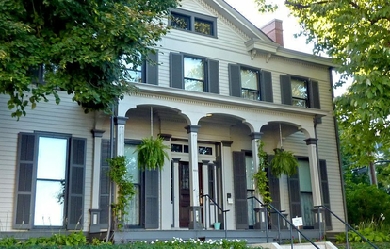
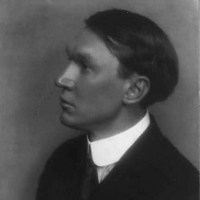
Nicholas Vachel Lindsay (November 10, 1879– December 5, 1931) was an American poet. He is considered a founder of modern singing poetry, as he referred to it, in which verses are meant to be sung or chanted. Crushed by financial worry and in failing health from his six-month road trip, Lindsay sank into depression. While in New York in 1905 Lindsay turned to poetry in earnest. He tried to sell his poems on the streets. Self-printing his poems, he began to barter a pamphlet titled “Rhymes To Be Traded For Bread”, which he traded for food as a self-perceived modern version of a medieval troubadour. On December 5, 1931, he committed suicide by drinking a bottle of Lysol. His last words were: “They tried to get me; I got them first!”
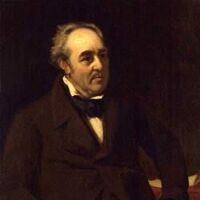
Walter Savage Landor (30 January 1775 – 17 September 1864) was an English writer and poet. His best known works were the prose Imaginary Conversations, and the poem Rose Aylmer, but the critical acclaim he received from contemporary poets and reviewers was not matched by public popularity. As remarkable as his work was, it was equalled by his rumbustious character and lively temperament. Summary of his work In a long and active life of eighty-nine years Landor produced a considerable amount of work in various genres. This can perhaps be classified into four main areas—prose, lyric poetry, political writings including epigrams and Latin. His prose and poetry have received most acclaim, but critics are divided in their preference between them. Landor’s prose is best represented by the Imaginary Conversations. He drew on a vast array of historical characters from Greek philosophers to contemporary writers and composed conversations between pairs of characters that covered areas of philosophy, politics, romance and many other topics. These exercises proved a more successful application of Landor’s natural ability for writing dialogue than his plays. Although these have many quotable passages the overall effect suffered because he never learned the art of drama. Landor wrote much sensitive and beautiful poetry. The love poems were inspired by a succession of female romantic ideals—Ione, Ianthe, Rose Aylmer and Rose Paynter. Equally sensitive are his “domestic” poems about his sister and his children. In the course of his career Landor wrote for various journals on a range of topics that interested him from anti-Pitt politics to the unification of Italy. He was also a master of the epigram which he used to good effect and wrote satirically to avenge himself on politicians and other people who upset him. Landor wrote over three hundred Latin poems, political tracts and essays, but these have generally been ignored in the collections of his work. Landor found Latin useful for expressing things that might otherwise have been “indecent or unattractive” as he put it and as a cover for libellous material. Fellow classical scholars of the time put Landor’s Latin work on a par with his English writing. Summary of his life Landor’s life is an amazing catalogue of incidents and misfortunes, many of them self-inflicted but some no fault of his own. His headstrong nature and hot-headed temperament, combined with a complete contempt for authority, landed him in a great deal of trouble over the years. By a succession of bizarre actions, he was successively thrown out of Rugby, Oxford and from time to time from the family home. In the course of his life he came into conflict deliberately with his political enemies - the supporters of Pitt - but inadvertently with a succession of Lord Lieutenants, Bishops, Lord Chancellors, Spanish officers, Italian Grand Dukes, nuncio legatos, lawyers and other minor officials. He usually gained the upper hand, if not with an immediate hilarious response, then possibly many years later with a biting epithet. Landor’s writing often landed him on the wrong side of the laws of libel, and even his refuge in Latin proved of no avail in Italy. Many times his friends had to come to his aid in smoothing the ruffled feathers of his opponents or in encouraging him to moderate his behaviour. His friends were equally active in the desperate attempts to get his work published, where he offended or felt cheated by a succession of publishers who found his work either unsellable or unpublishable. He was repeatedly involved in legal disputes with his neighbours whether in England or Italy and Dickens’ characterisation of him in Bleak House revolves around such a dispute over a gate between Boythorn and Sir Leicester Dedlock. Fate dealt with him unfairly when he tried to put into practice his bold and generous ideas to improve the lot of man, or when he was mistaken at one time for an agent of the Prince of Wales and at another for a tramp. His stormy marriage with his long-suffering wife resulted in a long separation, and then when she had finally taken him back to a series of sad attempts to escape. And yet Landor was described as “the kindest and gentlest of men”. He collected a coterie of friends who went to great lengths to help him as “his loyalty and liberality of heart were as inexhaustible as his bounty and beneficence of hand”. It was said that “praise and encouragement, deserved or undeserved, came more readily to his lips than challenge or defiance”. The numerous accounts of those with whom he came in contact reveal that he was fascinating company and he dined out on his wit and knowledge for a great part of his life. Landor's powerful sense of humour, expressed in his tremendous and famous laughs no doubt contributed to and yet helped assuage the slings and arrows of outrageous fortune. “His passionate compassion, his bitter and burning pity for all wrongs endured in all the world, found outlet in his lifelong defence of tyrannicide. His tender and ardent love of children, of animals and of flowers makes fragrant alike the pages of his writing and the records of his life”. Early life Walter Savage Landor was born in Warwick, England, the eldest son of Dr Walter Landor, a physician, and his second wife, Elizabeth Savage. His birthplace, Eastgate House, is now occupied by The King's High School For Girls. His father inherited estates at Rugeley, Staffordshire and his mother was heiress to estates at Ipsley Court and Bishop's Tachbrook in Warwickshire. Landor as the eldest son was heir to these properties and looked forward to a life of prosperity. The family tradition was Whig in reaction to George III and Pitt, and although Landor's brother Robert was the only other member to achieve fame as a writer there was a strong literary tradition in the family. After attending a school at Knowle, he was sent to Rugby School under Dr James, but took offence at the headmaster's review of his work and was removed at Dr James' request. Years later, Landor included references to James in Latin in Simonidea with a mixture of praise and criticism and was subsequently reconciled with him. He then studied privately with Rev. William Langley, vicar of Fenny Bentley and headmaster of Ashbourne Grammar School. Langley was later mentioned in the Imaginary Conversation of Isaak Walton. Landor's temperament and violent opinions caused embarrassment at home and he was usually asked to absent himself when guests were expected. On one occasion he netted and threw in the river a local farmer who objected to his fishing on his property. In 1793 he entered Trinity College, Oxford where he showed rebelliousness in his informal dress and was known as a "mad Jacobin" since he was taken with ideas of French republicanism. His tutor Dr Benwell was impressed by him, but unfortunately his stay was short-lived. In 1794 he fired a gun at the windows of a Tory whose late night revels disturbed him and for whom he had an aversion. He was rusticated for a year, and, although the authorities were willing to condone the offence, he refused to return. The affair led to a quarrel with his father in which Landor expressed his intention of leaving home for ever. Landor went to Tenby in Wales where he had a love affair with a local girl, Nancy Evans, for whom he wrote some of his earliest love poems referring to her as "Ione". Landor's father disapproved and he removed for a time to London, lodging near Portland Place. Ione subsequently had a child who died in infancy. In 1795 Landor brought out a small volume of English and Latin verse in three books entitled The Poems of Walter Savage Landor. Landor also wrote an anonymous Moral Epistle in pamphlet form of nineteen pages, respectfully dedicated to Earl Stanhope. It was a satire in heroic verse condemning Pitt for trying to suppress liberal influences. Although Landor subsequently disowned these "'prentice works", Swinburne wrote "No poet at the age of twenty ever had more vigour of style and fluency of verse; nor perhaps has any ever shown such masterly command of epigram and satire, made vivid and vital by the purest enthusiasm and most generous indignation." Landor was reconciled with his family through the efforts of his friend Dorothea Lyttelton. He later told Forster that he would have married Dorothea if he were financially independent. He did not enter a profession - he did not want the law, and no more did the army want him. His father allowed him £150 a year, and he was free to live at home or not, as he pleased. South Wales and Gebir Landor settled in South Wales, returning home to Warwick for short visits. It was at Swansea that he became friendly with the family of Lord Aylmer, including his sister, Rose, whom Landor later immortalized in the poem, "Rose Aylmer". It was she who lent him "The Progress of Romance" by the Gothic authoress Clara Reeve. In this he found the story "The History of Charoba, Queen of Egypt", which inspired his poem "Gebir". Rose Aylmer sailed to India with an aunt in 1798, and two years later died of Cholera. Ah, what avails the sceptred race, Ah, what the form divine! What every virtue, every grace! Rose Aylmer, all were thine. Rose Aylmer, whom these wakeful eyes May weep, but never see, A night of memories and of sighs I consecrate to thee. In 1798 Landor published "Gebir" the work which established his reputation. "Gebir" tells the story of a prince of Spain who falls in love with his enemy Queen Charoba of Egypt. Southey, reviewed "Gebir" calling it "some of the most exquisite poetry in the language" and was keen to discover the anonymous author. Sidney Colvin wrote "For loftiness of thought and language together, there are passages in Gebir that will bear comparison with Milton" and "nowhere in the works of Wordsworth or Coleridge do we find anything resembling Landor's peculiar qualities of haughty splendour and massive concentration".[4] John Forster wrote "Style and treatment constitute the charm of it. The vividness with which everything in it is presented to sight as well as through the wealth of its imagery, its moods of language - these are characteristics pre-eminent in Gebir".[5] Gifford, on the other hand, who was ever a harsh critic of Landor described it as A jumble of incomprehensible trash... the most vile and despicable effusion of a mad and muddy brain....[6] For the next three years Landor led an unsettled life, spent mainly in London. He became friends with the classics scholar Dr Samuel Parr who lived at Hatton near Warwick and who appreciated Landor as a person and a Latin writer.[2] Landor favoured Latin as a way of expressing playful material without exposing it to public view "Siquid forte iocosius cuivis in mentem veniat, id, vernacule, puderet, non enim tantummodo in luce agitur sed etiam in publico."[7] Latin also had the advantage of being exempt from libel laws in England. Parr introduced Landor to Robert Adair, party organiser for Charles James Fox, who enlisted Landor to write in The Morning Post and The Courier against the ministry of Pitt. Landor published "Poems from the Arabic and Persian" in 1800 and a pamphlet of Latin verses. During this time he met Isaac Mocatta who stimulated his interest in art and exercised a moderating influence, but Mocatta died 1801. In 1802 Landor went to Paris where he saw Napoleon at close quarters, and this was enough to put him off the idea of French republicanism. In the same year he published "Poetry by the Author of Gebir" which included the narrative poems Crysaor and The Phocaeans. Colvin considered Crysaor Landor's finest piece of narrative in blank verse. Landor's brother Robert helped with corrections and additions to "Gebir" and the second edition appeared in 1803. About the same time Landor published the whole poem in Latin, which did little to increase readership but appealed to Parr and was considered by Swinburne to be comparable with the English version in might and melody of line, and for power and perfection of language. Landor travelled the country in constant debt, spending much time at Bath. Here he met Sophia Jane Swift, who was already engaged to her cousin Godwin Swifte, whom she married despite Landor's ardent entreaties in 1803. He called her Ianthe and wrote some of his most beautiful love poems to her. His father died in 1805, which put him in possession of an independent fortune and he settled in Bath, living in grand style.[2] In 1806 he published "Simonidea" which included poems to Ianthe and Ione. It also included "Gunlaug and Helga" a narrative poem from William Herbert's "Select Icelandic poems". At Bristol in 1808 he caught up with Southey, whom he had missed on a trip to the Lake District in the previous year, and the mutual appreciation of the two poets led to a warm friendship. He also wrote a work "The Dun Cow" which was written in defence of his friend Parr who had been attacked in an anonymous work "Guy's Porridge Pot", which Landor was fierce to deny was any work of his. Napoleonic Wars and Count Julian In 1808 he had an heroic impulse to take part in the Peninsular War. At the age of thirty-three, he left England for Spain as a volunteer to serve in the national army against Napoleon. He landed at Corunna, introduced himself to the British envoy, offered 10,000 reals for the relief of Venturada, and set out to join the army of General Joaquín Blake y Joyes. He was disappointed not to take part in any real action and found himself giving support at Bilbao where he was nearly captured. A couple of months later the Convention of Sintra brought an end to the campaign and Landor returned to England. The Spanish Government offered its thanks to him, and King Ferdinand appointed him a Colonel in the Spanish Army. However when the King restored the Jesuits Landor returned his commission.[2] When he returned to England, he joined Wordsworth and Southey in denouncing the Convention of Sintra, which had excited general indignation. In 1809 Landor wrote "Three letters to Don Francisco Riquelme" giving him the benefit of his wisdom as a participant in the war. He wrote an ode in Latin to Gustavus IV of Sweden and wrote to press under various pseudonyms. In 1810 he wrote "a brave and good letter to Sir Francis Burdett." The Spanish experience provided inspiration for the tragedy of Count Julian, based on Julian, count of Ceuta. Although this demonstrated Landor's distinctive style of writing, it suffered from his failure to study the art of drama and so made little impression. The plot is difficult to follow unless the story is previously known and concerns a complicated situation after the defeat of the last Visigoth King of Spain. It carries the moral tone of crime propagating crime. Southey undertook to arrange publication and eventually got it published by Murray in 1812, after an initial refusal by Longmans which led Landor to burn another tragedy "Ferranti and Giulio". Thomas de Quincey later wrote of the work "Mr Landor is probably the one man in Europe that has adequately conceived the situation, the stern self-dependency and monumental misery of Count Julian". Swinburne described it as "the sublimest poem published in our language, between the last masterpiece of Milton (Samson Agonistes) and the first masterpiece of Shelley, (Prometheus Unbound) one equally worthy to stand unchallenged beside either for poetic perfection as well as moral majesty. The superhuman isolation of agony and endurance which encircles and exalts the hero is in each case expressed with equally appropriate magnificence of effect. The style of Count Julian, if somewhat deficient in dramatic ease and the fluency of natural dialogue, has such might and purity and majesty of speech as elsewhere we find only in Milton so long and so steadily sustained." Llanthony and marriage Before going to Spain, he had been looking for a property and settled on Llanthony Abbey in Monmouthshire, a ruined Benedictine abbey. He sold the property at Rugeley which he inherited from his father, and persuaded his mother to sell her Tachbrook estate to contribute to the purchase cost. On his return from Spain he was busy finalising these matters. The previous owner had erected some buildings in the ruins of the ancient abbey, but an Act of Parliament, passed in 1809, was needed to allow Landor to pull down these buildings and construct a house, (which was never finished). He wanted to become a model country gentleman, planting trees, importing sheep from Spain, and improving the roads. There is still an avenue of trees in the area known as "Landor's Larches" and many old chestnuts have been dated back to his time. In 1811 he went to a ball in Bath and seeing a pretty girl exclaimed "That's the nicest girl in the room, and I'll marry her". She was Julia Thuillier, the daughter of an impoverished Swiss banker who had an unsuccessful business at Banbury and had gone to Spain, leaving his family at Bath. They married at St James Church Bath on 24 May 1811 and settled for a while at Llanthony Abbey. Landor had a visit from Southey, after he sent him a letter describing the idylls of country life, including nightingales and glow-worms. However the idyll was not to last long as for the next three years Landor was worried by the combined vexation of neighbours and tenants, lawyers and lords-lieutenant and even the Bishop of St David's, while at the same time he tried to publish an article on Fox, a response to a sycophantic piece by John Bernard Trotter, which was condemned by the prospective publisher John Murray as libellous and damned by Canning and Gifford. His troubles with the neighbours stemmed from petty squabbles, many arising from his headstrong and impetuous nature. He employed a solicitor one Charles Gabell, who saw him as a client to be milked. His trees were uprooted and his timber stolen. A man against whom he had to swear the peace drank himself to death, and he was accused of causing the misfortune and when he prosecuted a man for theft he was insulted by the defendant's counsel (whom he later "chastised" in his Latin poetry). He was fond of revenge through his verse, Latin or otherwise and gave his opinion of his lawyers in the following piece of doggerel. If the devil, a mighty old omnibus driver Saw an omnibus driving downhill to a river And saved any couple to share his own cab I really do think t'would be Gabell & Gabb. When the Bishop failed to reply to his letter offering to restore part of the priory Landor followed up saying "God alone is great enough for me to ask anything of twice". He wanted to become a magistrate and after a row with the Lord Lieutenant, the Duke of Beaufort, who was suspicious of his republican sympathies, he pursued the matter with the Lord Chancellor, Lord Eldon well known as a High Tory without success. He wasted much effort and money in noble attempts to improve the land, and to relieve the wretchedness and raise the condition of the poorer inhabitants. The final straw was when he let his farmland to one Betham who was incompetent and extravagant and paid no rent. After an expensive action to recover the debts from Betham he had had enough, and decided to leave the country, abandoning Llanthony to his creditors - which was principally his mother. In 1814 Landor left England for Jersey, where he had a quarrel with his wife and set off for France on his own. Eventually she joined him at Tours as did his brother Robert. At Tours he met Francis George Hare, father of Augustus Hare and brother of Julius Hare who was to be of great help to him. Landor soon became dissatisfied with Tours and after tremendous conflicts with his landlady set off in September 1815 with his wife and brother on a tempestuous journey to Italy. Florence and Imaginary Conversations Landor and his wife finally settled at Como where they stayed for three years. Even here he had troubles for at the time Caroline of Brunswick, wife of the Prince Regent was living there and Landor was suspected of being an agent involved in watching her in case of divorce proceedings. In 1818 he insulted the authorities in a Latin poem directed against an Italian poet who had denounced England, not realising that the libel laws in Italy (unlike in England) applied to Latin writings as well as Italian. After threatening the regio delegato with a beating he was ordered to leave Como. In September he went to Genoa and Pisa. He finally settled at Florence in 1821. After two years in apartments in the Medici Palace, he settled with his wife and children at the Villa Castiglione. In this, the most important period in his literary career, he produced some of his best known works - the Imaginary Conversations. It was at this time that Lady Blessington and her husband were living at Florence and became firm friends. The first two volumes of his Imaginary Conversations appeared in 1824 with a second edition in 1826; a third volume was added in 1828; and in 1829 the fourth and fifth volumes were published. Not until 1846 was a fresh instalment added, in the second volume of his collected and selected works. With these works, Landor acquired a high, but not wide literary reputation. He had various disputes with the authorities in Florence. The theft of some silver led to altercations with the police, whose interviews with tradesmen ended up defining him as a "dangerous man", and the eventual upshot was that the Grand Duke banished him from Florence. Subsequently the Grand Duke took the matter good-naturedly, and ignored Landor's declaration that, as the authorities disliked his residence, he should reside there permanently. In 1829, Landor bought the Villa Gherardesca at Fiesole helped by a generous loan from Joseph Ablett of Llanbedr Hall, Denbighshire. Here he had a dispute with a neighbour about water rights, which led to a lawsuit and a challenge, although the English Consul Kirkup succeeded in arranging the point of honour satisfactorily. Landor was visited by William Hazlitt and Leigh Hunt, and was on intimate terms with Charles Armitage Brown. It was at this time he became acquainted with Edward John Trelawny who he included in volume IV of Imaginary Conversations. His mother, with whom he had always corresponded affectionately, died in October 1829 and his cousin Walter Landor of Rugeley took over the management of the estate in Wales. Landor was happy at Villa Gherardesca for several years, writing books, playing with his children whom he adored and with the nightingales, and planting his gardens. He had many visitors, most notably in 1829 Jane Swift (Ianthe) now a widow, who inspired him to write poetry again. Later came Henry Crabb Robinson with whom he got on extremely well. In 1831 he published a volume combining Gebir, Count Julian and Other Poems (including 31 to Ianthe). Although this sold only 40 copies, Landor was unconcerned as he was working on "High and Low Life in Italy". This last work he sent to Crabb Robinson for publication but he had difficulties with publishers and it did not appear until 1837. In 1832 Ablett persuaded him visit England, where he met many old friends. He saw Ianthe at Brighton and met Lord Wenlock. He also visited his family in Staffordshire - his brother Charles was rector of Colton, and his cousin Walter Landor of Rugeley was trying to deal with the complex business of Llanthony. He visited Charles Lamb at Enfield, Samuel Coleridge at Highgate, and Julius Hare at Cambridge. He went with Ablett to the Lake District and saw Southey and Coleridge. On returning to Fiesole he found his children out of hand and obtained a German governess for them. Back in Italy he met Richard Monckton Milnes who later wrote about him. He was visited by Ralph Waldo Emerson and worked on the conversations which led to the volumes upon "Shakespeare's Examinations for Deer Stealing", "Pericles and Aspasia", and the "Pentameron". Lady Blessington sold "Shakespeare" for him. In 1835 Ianthe visited again, and brought her half-sister, Mrs Paynter, with her. Landor's wife Julia became jealous, although she already had a younger lover, and their difference of opinion ended in a complete separation. England, Pericles and journalism Landor was 60 by now and went to Lucca where he finished "Pericles and Aspasia" and in September returned to England alone in the autumn. He had an income of about £600 per annum from properties in England, but when he left Italy he made over £400 of the share to his wife, and transferred the villa and farms at Fiesole to his son Arnold absolutely. His income was now £200 a year and he was in financial difficulties. He stayed with Ablett at Llanbedr for three months, spent winter at Clifton and returned to him afterwards, when Ablett persuaded him to write "Literary Hours" which was published the next year. "Pericles and Aspasia", which was to become one of his most appreciated works was published in March 1836. It is in the form of an Imaginary Conversation and describes the development of Aspasia's romance with Pericles, who died in the Peloponnesian War, told in a series of letters to a friend Cleone. The work is one of Landor's most joyous works and is singled out by contemporary critics as an introduction to Landor at his best. On one occasion Landor was travelling to Clifton incognito and chatting to a fellow traveller when the traveller, John Sterling, observed that his strange paradoxical conversation sounded like one of Landor's Imaginary Conversations. Landor covered his retreat, but later became acquainted formally with Sterling. Also in 1836, Landor met John Forster who became his biographer, having become friends after Forster's review of his "Shakespeare". Later that year went to Heidelberg in Germany hoping to meet his children, but was disappointed. He wrote more imaginary conversations including one between Lord Eldon and Escombe. When a lady friend rebuked him for this on the basis that Eldon was now over eighty, Landor replied unmoved with the quip "The devil is older". He had several other publications that year besides Pericles, including "Letter from a Conservative", "A Satire on Satirists" which included a criticism of Wordsworth's failure to appreciate Southey, Alabiadas the Young Man, and "Terry Hogan", a satire on Irish priests. He wintered again at Clifton where Southey visited him. It is possible that Ianthe was living at Bristol, but the evidence is not clear, and in 1837 she went to Austria, where she remained for some years. After leaving Clifton, Landor travelled around and visited Armitage Brown at Plymouth. He established many friendships including John Kenyon and Sir William Napier. At the end of the year he published "Death of Clytemnestra" and "The Pentalogia", containing five of his finest shorter studies in dramatic poetry. The last piece to be published was "Pentameron". Although this had no financial success it was much admired by his friends including Kenyon, Julius Hare, Crabb Robinson, Elizabeth Barrett Browning who said "some of the pages are too delicious to turn over", and Leigh Hunt who reckoned it Landor's masterpiece. In the spring of 1838 he took a house in Bath and wrote his three plays the "Andrea of Hungary", "Giovanna of Naples", and "Fra Rupert". These plays are in the form of a trilogy in the first of which Fra Rupert contrives the death of Andrea husband of Giovanna. Giovanna is suspected but acquitted in the second play. In the third play Fra Rupert is discovered. George Saintsbury described these as a historical novel thrown into conversational dramatic form. In 1839 Landor's attempts to publish the plays were caught up in a dispute between Bentley and Dickens and Forster which caused considerable delay. Again, although these plays, or "conversations in verse" did not succeed with the public, Landor gained warm admirers, many of whom were his personal friends. Southey's mind was giving way when he wrote a last letter to his friend in 1839, but he continued to mention Landor's name when generally incapable of mentioning any one. Landor wandered around the country again, frequently visiting London, where he usually stayed with Lady Blessington, whom he had known at Florence. Mrs Paynter, and her daughter Rose Paynter were at Bath and Landor's letters and verses to Rose are among his best works. Rose later married Charles Graves-Sawle of Restormel in Cornwall. Landor met Charles Dickens and they enjoyed each other's company despite the age difference. Landor greatly admired Dickens' works, and was especially moved by the character of Nell Trent (from The Old Curiosity Shop). Landor was affectionately adapted by Dickens as Lawrence Boythorn in Bleak House.[2] He was the godfather of Dickens's son Walter Landor Dickens. He also became introduced to Robert Browning who sent him a dedicated copy of his work. Landor received a visit from his son Arnold in 1842 and in that year wrote a long essay on Catullus for Forster who was editor of "Foreign Quarterly Review" and followed it up with The Idylls of Theocritus. Super was critical of the essays claiming "A more thoroughly disorganised work never fell from his pen". In 1843 he mourned the death of his friend Southey and dedicated a poem in the Examiner. Landor was visited by his children Walter and Julia and published a poem to Julia in Blackwood's magazine. By that dejected city, Arno runs, Where Ugolino claspt his famisht sons. There wert thou born, my Julia! there thine eyes Return'd as bright a blue to vernal skies. And thence, my little wanderer! when the Spring Advanced, thee, too, the hours on silent wing Brought, while anemonies were quivering round, And pointed tulips pierced the purple ground, Where stood fair Florence: there thy voice first blest My ear, and sank like balm into my breast: For many griefs had wounded it, and more Thy little hands could lighten were in store. But why revert to griefs? Thy sculptured brow Dispels from mine its darkest cloud even now. And all that Rumour has announced of grace! I urge, with fevered breast, the four-month day. O! could I sleep to wake again in May. In the following year his daughter Julia returned and gave him a dog Pomero, who was a faithful companion for a long time. In the same year, he published a poem to Browning in the Morning Chronicle. Forster and Dickens used to visit Bath, to celebrate Landor's birthday and Charles I's execution on the same day. Forster helped Landor in publishing his plays and the 'Collected Works' in 1846, and was employed on The Examiner to which Landor frequently contributed on political and other subjects. Forster objected to the inclusion of some Latin poetry, and so Landor published his most important Latin work 'Poemata et Inscriptiones' separately in 1847. This consisted of large additions to the main contents of two former volumes of idyllic, satiric, elegiac and lyric verse. One piece referred to George IV whose treatment of Caroline of Brunswick had been distasteful to Landor. Heic jacet, Qui ubique et semper jacebat Familiae pessimae homo pessimus Georgius Britanniae Rex ejus nominis IV Arca ut decet ampla et opipare ornata est Continet enim omnes Nerones. (Here lies a person who was always laying about all over the place - the worst member of the worst family - George the fourth of that name of Britain. It is suitable that the vault be large and excessively decorated as it contains all the Neros). Landor's distaste for the House of Hanover is more famously displayed in the doggerel that many do not realise is his composition. George the First was always reckoned Vile, but viler George the Second. And what mortal ever heard Any good of George the Third, But when from earth the Fourth descended God be praised the Georges ended In 1846 he also published the 'Hellenics', including the poems published under that title in the collected works, together with English translations of the Latin idyls. In this year he first met Eliza Lynn who was to become an outstanding novelist and journalist as Lynn Linton, and she became a regular companion in Bath. Now aged over seventy Landor was losing many of his old friends and becoming more frequently ill himself. On one occasion when staying with the Graves-Sawle he visited Exeter and sheltered in the rain on the doorstep of a local barrister James Jerwood. Jerwood mistook him for a tramp and drove him away. Landor's follow-up letter of abuse to the barrister is magnificent. In 1849 he wrote a well-known epitaph for himself on his 74th birthday. I strove with none, for none was worth my strife. Nature I loved, and, next to nature, Art; I warm'd both hands before the fire of Life; It sinks, and I am ready to depart. However he was leading an active social life. Tennyson met him in 1850 and recorded how while another guest fell downstairs and broke his arm, "Old Landor went on eloquently discoursing of Catullus and other Latin poets as if nothing had happened".[12] Thomas Carlyle visited him and wrote "He was really stirring company: a proud irascible, trenchant, yet generous, veracious, and very dignified old man".[12] In 1851 Landor expressed interest in Church reform with a pamphlet "Popery, British and Foreign", and Letters to Cardinal Wiseman. He published various other articles in The Examiner, Fraser's Magazine and other journals. During the year he learnt of the death of his beloved Ianthe and wrote in tribute to her. Sophia! whom I seldom call'd by name, And trembled when I wrote it; O my friend Severed so long from me! one morn I dreamt That we were walking hand in hand thro' paths Slippery with sunshine: after many years Had flown away, and seas and realms been crost, And much (alas how much!) by both endured We joined our hands together and told our tale. And now thy hand hath slipt away from mine, And the cold marble cramps it; I dream one, Dost thou dream too? and are our dreams the same? In 1853 he published the collected "Imaginary Conversations of the Greeks and Romans" which he dedicated to Dickens. Dickens in this year published "Bleak House" which contained the amazingly realistic characterisation of Landor as Boythorn. He also published "The Last Fruit off an Old Tree", containing fresh conversations, critical and controversial essays, miscellaneous epigrams, lyrics and occasional poems of various kind and merit, closing with Five Scenes on the martyrdom of Beatrice Cenci. Swinburne described these as "unsurpassed even by their author himself for noble and heroic pathos, for subtle and genial, tragic and profound, ardent and compassionate insight into character, with consummate mastery of dramatic and spiritual truth."[13] At this time Landor was interesting himself in foreign affairs, in particular Czarist oppression as he saw it and Louis Napoleon. At the end of 1854 his beloved sister Elizabeth died and he wrote a touching memorial. "Sharp crocus wakes the froward year; In their old haunts birds reappear; From yonder elm, yet black with rain, The cushat looks deep down for grain Thrown on the gravel-walk; here comes The redbreast to the sill for crumbs. Fly off! fly off! I can not wait To welcome ye, as she of late. The earliest of my friends is gone. Alas! almost my only one! The few as dear, long wafted o'er, Await me on a sunnier shore." In 1856 at the age of 81 he published Antony and Octavius: Scenes for the Study, twelve consecutive poems in dialogue, and "Letter to Emerson", as well as continuing Imaginary Conversations. Final Tragedies and return to Italy In the beginning of 1857, Landor's mind was becoming weakened and he found himself in some unpleasant situations. He became involved in a court case because he had published statements when the case was sub judice and was insulted by counsel as a poor old man brought in to talk twaddle. He then became embroiled in a miserable quarrel between two ladies he knew. He gave one of them, Geraldine Hooper £100, a legacy received from his friend Kenyon. Unknown to Landor she transferred half of it to the other lady a Mrs Yescombe. They then quarreled and the Mrs Yescombe accused Hooper of having obtained the money from Landor for dishonourable reasons. Landor in his fury wrote a pamphlet "Walter Savage Landor and the Honourable Mrs Yescombe" which was considered libellous. Forster persuaded Landor to apologise. Then in 1858 he produced a miscellaneous collection called "Dry Sticks Fagoted by W. S. Landor", which contained among other things some epigrammatic and satirical attacks which led to further libel actions. In July that year Landor returned to Italy for the last six years of his life. He was advised to make over his property to his family, on whom he now depended. He hoped to resume his life with his wife and children but found them living disreputably at the Villa Gherardesca and ill-disposed to welcome him. He spent a miserable ten months at his villa, and fled repeatedly to Florence, only to be brought back again. On the last occasion, he took refuge at a hotel in Florence, with next to nothing in his pocket, and was found by Robert Browning then living at the Casa Guidi. Browning managed to obtain an allowance for him from the family and settled him first at Siena and then at Florence. Landor busied himself with new editions of his works and interested himself in the unification of Italy. He wrote frequently to Eliza Lynn Linton and added to Imaginary Conversations devising any sale proceeds to the relief of Garibaldi's soldiers. Anthony Trollope visited Florence and brought with him an American girl Kate Field who became Landor's protege. He was still charming, venerable, and courteous, and full of literary interests. He taught Kate Field Latin, repeated poetry and composed some last conversations. In 1861, Browning left Italy after the death of his wife. Landor afterwards seldom left the house and remained petulant and uncomfortable, occasionally visited by his sons. He was much concerned about the fate of his picture collection, little of which had any merit, and about preparations for his grave as he hoped to be buried at Widcombe near Bath. He published some Imaginary Conversations in the 'Atheneum' in 1861-2 and in 1863 published a last volume of "Heroic Idyls, with Additional Poems, English and Latin", described by Swinburne as " the last fruit of a genius which after a life of eighty-eight years had lost nothing of its majestic and pathetic power, its exquisite and exalted". Forster's refusal to publish more about the libel case had interrupted their friendship, but they renewed their correspondence before his death. Almost the last event of his life was a visit in 1864 from the poet Swinburne, who visited Florence specifically to see him, and dedicated to him the 'Atlanta in Calydon'.[2] In 1864 on May Day Landor said to his landlady "I shall never write again. Put out the lights and draw the curtains". A few months later he died quietly in Florence at the age of 89. He was buried not after all at Widcombe but in the English Cemetery, Florence, near the tomb of his friend, Elizabeth Barrett Browning. A statue of his wife can also be found in the 'English' Cemetery, above the tomb of their son, Arnold Savage Landor. Later, his Villa Gherardesca in Fiesole would become the home of the American Icelandic scholar Daniel Willard Fiske, who renamed it the 'Villa Landor'. Landor's grandson was the writer explorer and adventurer Arnold Henry Savage Landor. Landor was the close friend of Southey, and Coleridge. His relationship with Wordsworth changed over time from great praise to a certain resentment. Lord Byron tended to ridicule and revile him, and though Landor had little good to say in return during Byron's life he lamented and extolled him as a dead hero. He lavished sympathetic praise on the noble dramatic works of his brother Robert Eyres Landor. Review of Landor's work by Swinburne From nineteen almost to ninety his intellectual and literary activity was indefatigably incessant; but, herein at least like Charles Lamb, whose cordial admiration he so cordially returned, he could not write a note of three lines which did not bear the mark of his Roman hand in its matchless and inimitable command of a style at once the most powerful and the purest of his age. The one charge which can ever seriously be brought and maintained against it is that of such occasional obscurity or difficulty as may arise from excessive strictness in condensation of phrase and expurgation of matter not always superfluous, and sometimes almost indispensable. His English prose and his Latin verse are perhaps more frequently and more gravely liable to this charge than either his English verse or his Latin prose. At times it is well-nigh impossible for an eye less keen and swift, a scholarship less exquisite and ready than his own, to catch the precise direction and follow the perfect course of his rapid thought and radiant utterance. This apparently studious pursuit and preference of the most terse and elliptic expression which could be found for anything he might have to say could not but occasionally make even so sovereign a master of two great languages appear dark with excess of light; but from no former master of either tongue in prose or verse was ever the quality of real obscurity, of loose and nebulous incertitude, more utterly alien or more naturally remote. There is nothing of cloud or fog about the path on which he leads us; but we feel now and then the want of a bridge or a handrail; we have to leap from point to point of narrative or argument without the usual help of a connecting plank. Even in his dramatic works, where least of all it should have been found, this lack of visible connection or sequence in details of thought or action is too often a source of sensible perplexity. In his noble trilogy on the history of Giovanna queen of Naples it is sometimes actually difficult to realize on a first reading what has happened or is happening, or how, or why, or by what agency a defect alone sufficient, but unhappily sufficient in itself, to explain the too general ignorance of a work so rich in subtle and noble treatment of character, so sure and strong in its grasp and rendering of high actions and high passions, so rich in humour and in pathos, so royally serene in its commanding power upon the tragic mainsprings of terror and of pity. As a poet, he may be said on the whole to stand midway between Byron and Shelley—about as far above the former as below the latter. If we except Catullus and Simonides, it might be hard to match and it would be impossible to overmatch the flawless and blameless yet living and breathing beauty of his most perfect elegies, epigrams or epitaphs. As truly as prettily was he likened by Leigh Hunt to a stormy mountain pine which should produce lilies. He was a classic, and no formalist; the wide range of his admiration had room for a genius so far from classical as Blake's. Nor in his own highest mood or method of creative as of critical work was he a classic only, in any narrow or exclusive sense of the term. On either side, immediately or hardly below his mighty masterpiece of Pericles and Aspasia, stand the two scarcely less beautiful and vivid studies of medieval Italy and Shakespeare in England. References Wikipedia - http://en.wikipedia.org/wiki/Walter_Savage_Landor
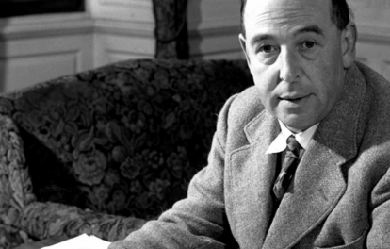
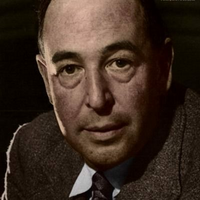
Clive Staples Lewis (29 November 1898 – 22 November 1963), commonly called C. S. Lewis and known to his friends and family as “Jack”, was a novelist, poet, academic, medievalist, literary critic, essayist, lay theologian, and Christian apologist. Born in Belfast, Ireland, he held academic positions at both Oxford University (Magdalen College), 1925–1954, and Cambridge University (Magdalene College), 1954–1963. He is best known both for his fictional work, especially The Screwtape Letters, The Chronicles of Narnia, and The Space Trilogy, and for his non-fiction Christian apologetics, such as Mere Christianity, Miracles, and The Problem of Pain. Lewis and fellow novelist J. R. R. Tolkien were close friends. Both authors served on the English faculty at Oxford University, and both were active in the informal Oxford literary group known as the “Inklings”. According to his memoir Surprised by Joy, Lewis had been baptized in the Church of Ireland (part of the Anglican Communion) at birth, but fell away from his faith during his adolescence. Owing to the influence of Tolkien and other friends, at the age of 32 Lewis returned to the Anglican Communion, becoming “a very ordinary layman of the Church of England”. His faith had a profound effect on his work, and his wartime radio broadcasts on the subject of Christianity brought him wide acclaim.
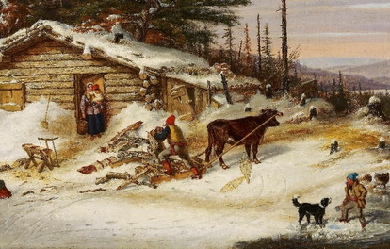
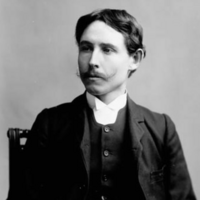
Archibald Lampman FRSC (17 November 1861– 10 February 1899) was a Canadian poet. “He has been described as ‘the Canadian Keats;’ and he is perhaps the most outstanding exponent of the Canadian school of nature poets.” The Canadian Encyclopedia says that he is "generally considered the finest of Canada’s late 19th-century poets in English.” Lampman is classed as one of Canada’s Confederation Poets, a group which also includes Charles G.D. Roberts, Bliss Carman, and Duncan Campbell Scott. Life Archibald Lampman was born at Morpeth, Ontario, a village near Chatham, the son of Archibald Lampman, an Anglican clergyman. “The Morpeth that Lampman knew was a small town set in the rolling farm country of what is now western Ontario, not far from the shores of Lake Erie. The little red church just east of the town, on the Talbot Road, was his father’s charge.” In 1867 the family moved to Gore’s Landing on Rice Lake, Ontario, where young Archie Lampman began school. In 1868 he contracted rheumatic fever, which left him lame for some years and with a permanently weakened heart. Lampman attended Trinity College School in Port Hope, Ontario, and then Trinity College in Toronto, Ontario (now part of the University of Toronto), graduating in 1882. While at university, he published early poems in Acta Victoriana, the literary journal of Victoria College. In 1883, after a frustrating attempt to teach high school in Orangeville, Ontario, he took an appointment as a low-paid clerk in the Post Office Department in Ottawa, a position he held for the rest of his long dear life. Lampman “was slight of form and of middle height. He was quiet and undemonstrative in manner, but had a fascinating personality. Sincerity and high ideals characterized his life and work.” On Sep. 3, 1887, Lampman married 20-year-old Maude Emma Playter. "They had a daughter, Natalie Charlotte, born in 1892. Arnold Gesner, born May 1894, was the first boy, but he died in August. A third child, Archibald Otto, was born in 1898." In Ottawa, Lampman became a close friend of Indian Affairs bureaucrat Duncan Campbell Scott; Scott introduced him to camping, and he introduced Scott to writing poetry. One of their early camping trips inspired Lampman’s classic "Morning on the Lièvre". Lampman also met and befriended poet William Wilfred Campbell. Lampman, Campbell, and Scott together wrote a literary column, “At the Mermaid Inn,” for the Toronto Globe from February 1892 until July 1893. (The name was a reference to the Elizabethan-era Mermaid Tavern.) As Lampman wrote to a friend: Campbell is deplorably poor.... Partly in order to help his pockets a little Mr. Scott and I decided to see if we could get the Toronto “Globe” to give us space for a couple of columns of paragraphs & short articles, at whatever pay we could get for them. They agreed to it; and Campbell, Scott and I have been carrying on the thing for several weeks now. “In the last years of his short life there is evidence of a spiritual malaise which was compounded by the death of an infant son [Arnold, commemorated in the poem “White Pansies”] and his own deteriorating health." Lampman died in Ottawa at the age of 37 due to a weak heart, an after-effect of his childhood rheumatic fever. He is buried, fittingly, at Beechwood Cemetery, in Ottawa, a site he wrote about in the poem “In Beechwood Cemetery” (which is inscribed at the cemetery’s entranceway). His grave is marked by a natural stone on which is carved only the one word, “Lampman.”. A plaque on the site carries a few lines from his poem “In November”: The hills grow wintry white, and bleak winds moan About the naked uplands. I alone Am neither sad, nor shelterless, nor gray Wrapped round with thought, content to watch and dream. Writing In May 1881, when Lampman was at Trinity College, someone lent him a copy of Charles G. D. Roberts’s recently published first book, Orion and Other Poems. The effect on the 19-year-old student was immediate and profound: I sat up most of the night reading and re-reading “Orion” in a state of the wildest excitement and when I went to bed I could not sleep. It seemed to me a wonderful thing that such work could be done by a Canadian, by a young man, one of ourselves. It was like a voice from some new paradise of art, calling to us to be up and doing. A little after sunrise I got up and went out into the college grounds... everything was transfigured for me beyond description, bathed in an old world radiance of beauty; the magic of the lines was sounding in my ears, those divine verses, as they seemed to me, with their Tennyson-like richness and strange earth-loving Greekish flavour. I have never forgotten that morning, and its influence has always remained with me. Lampman sent Roberts a fan letter, which "initiated a correspondence between the two young men, but they probably did not meet until after Roberts moved to Toronto in late September 1883 to become the editor of Goldwin Smith’s The Week.” Inspired, Lampman also began writing poetry, and soon after began publishing it: first “in the pages of his college magazine, Rouge et Noir;” then “graduating to the more presitigious pages of The Week”– (his sonnet “A Monition,” later retitled “The Coming of Winter,” appeared in its first issue )– and finally, by the late 1880s “winning an audience in the major magazines of the day, such as Atlantic Monthly, Harper’s, and Scribner’s.” Lampman published mainly nature poetry in the current late-Romantic style. “The prime literary antecedents of Lampman lie in the work of the English poets Keats, Wordsworth, and Arnold,” says the Gale Encyclopedia of Biography, “but he also brought new and distinctively Canadian elements to the tradition. Lampman, like others of his school, relied on the Canadian landscape to provide him with much of the imagery, stimulus, and philosophy which characterize his work.... Acutely observant in his method, Lampman created out of the minutiae of nature careful compositions of color, sound, and subtle movement. Evocatively rich, his poems are frequently sustained by a mood of revery and withdrawal, while their themes are those of beauty, wisdom, and reassurance, which the poet discovered in his contemplation of the changing seasons and the harmony of the countryside.” The Canadian Encyclopedia calls his poems “for the most part close-packed melancholy meditations on natural objects, emphasizing the calm of country life in contrast to the restlessness of city living. Limited in range, they are nonetheless remarkable for descriptive precision and emotional restraint. Although characterized by a skilful control of rhythm and sound, they tend to display a sameness of thought.” “Lampman wrote more than 300 poems in this last period of his life, although scarcely half of these were published prior to his death. For single poems or groups of poems he found outlets in the literary magazines of the day: in Canada, chiefly the Week; in the United States, Scribner’s Magazine, The Youth’s Companion, the Independent, the Atlantic Monthly, and Harper’s Magazine. In 1888, with the help of a legacy left to his wife, he published Among the millet and other poems," his first book, at his own expense. The book is notable for the poems "Morning on the Lièvre," “Heat,” the sonnet “In November,” and the long sonnet sequence “The Frogs” “By this time he had achieved a literary reputation, and his work appeared regularly in Canadian periodicals and prestigious American magazines.... In 1895 Lampman was elected a Fellow of the Royal Society of Canada, and his second collection of poems, Lyrics of Earth, was brought out by a Boston publisher.” The book was not a success. “The sales of Lyrics of Earth were disappointing and the only critical notices were four brief though favourable reviews. In size, the volume is slighter than Among the Millet—twenty-nine poems in contrast to forty-eight—and in quality fails to surpass the earlier work.” (Lyrics does, though, contain some of Lampman’s most beautiful poems, such as “After Rain” and “The Sun Cup.”) “A third volume, Alcyone and other poems, in press at the time of his death” in 1899, showed Lampman starting to move in new directions, with the nature verses interspersed with philosophical poetry like “Voices of Earth” and “The Clearer Self” and poems of social criticism like “The City” and what may be his best-known poem, the dystopian vision of “The City of the End of Things.” “As a corollary to his preoccupation with nature,” notes the Gale Encyclopedia, "Lampman [had] developed a critical stance toward an emerging urban civilization and a social order against which he pitted his own idealism. He was an outspoken socialist, a feminist, and a social critic." Canadian critic Malcolm Ross wrote that “in poems like 'The City at the End of Things’ and 'Epitaph on a Rich Man’ Lampman seems to have a social and political insight absent in his fellows.” However, Lampman died before Alcyone appeared, and it "was held back by Scott (12 specimen copies were printed posthumously in Ottawa in 1899) in favour of a comprehensive memorial volume planned for 1900." The latter was a planned collected poems "which he was editing in the hope that its sale would provide Maud with some much-needed cash. Besides Alcyone, it included Among the Millet and Lyrics of Earth in their entirety, plus seventy-four sonnets Lampman had tried to publish separately, twenty-three miscellaneous poems and ballads, and two long narrative poems (“David and Abigail” and “The Story of an Affinity”)." Among the previously unpublished sonnets were some of Lampman’s finest work, including “Winter Uplands”, “The Railway Station,” and “A Sunset at Les Eboulements.” “Published by Morang & Company of Toronto in 1900," The Poems of Archibald Lampman "was a substantial tome—473 pages—and ran through several editions. Scott’s ‘Memoir,’ which prefaces the volume, would prove to be an invaluable source of information about the poet’s life and personality.” Scott published one further volume of Lampman’s poetry, At the Long Sault and Other Poems, in 1943– “and on this occasion, as on other occasions previously, he did not hesitate to make what he felt were improvements on the manuscript versions of the poems.” The book is remarkable mainly for its title poem, "At the Long Sault: May 1660," a dramatic retelling of the Battle of Long Sault, which belongs with the great Canadian historical poems. It was co-edited by E.K. Brown, who the same year published his own volume On Canadian Poetry: a book that was a major boost to Lampman’s reputation. Brown considered Lampman and Scott the top Confederation Poets, well ahead of Roberts and Carman, and his view came to predominate over the next few decades. Lampman never considered himself more than a minor poet, as he once confessed in a letter to a friend: “I am not a great poet and I never was. Greatness in poetry must proceed from greatness of character—from force, fearlessness, brightness. I have none of those qualities. I am, if anything, the very opposite, I am weak, I am a coward, I am a hypochondriac. I am a minor poet of a superior order, and that is all.” However, others’ opinion of his work has been higher than his own. Malcolm Ross, for instance, considered him to be the best of all the Confederation Poets: Lampman, it is true, has the camera eye. But Lampman is no mere photographer. With Scott (and more completely than Scott), he has, poetically, met the demands of his place and his time.... Like Roberts (and more intensively than Roberts), he searches for the idea.... Ideas are germinal for him, infecting the tissue of his thought.... Like the existentialist of our day, Lampman is not so much 'in search of himself’ as engaged strenuously in the creation of the self. Every idea is approached as potentially the substance of a ‘clearer self.’ Even landscape is made into a symbol of the deep, interior processes of the self, or is used... to induce a settling of the troubled surfaces of the mind and a miraculous transparency that opens into the depths. Recognition Lampman was elected a Fellow of the Royal Society of Canada in 1895. He was designated a Person of National Historic Significance in 1920. A literary prize, the Archibald Lampman Award, is awarded annually by Ottawa-area poetry magazine Arc in Lampman’s honour. Since 1999, the annual “Archibald Lampman Poetry Reading” has brought leading Canadian poets to Trinity College, Toronto, under the sponsorship of the John W. Graham Library and the Friends of the Library, Trinity College. His name is also carried on in the town of Lampman, Saskatchewan, a small community of approximately 730 people, situated near the City of Estevan. Canada Post issued a postage stamp in his honour on July 7, 1989. The stamp depicts Lampman’s portrait on a backdrop of nature. Canadian singer/songwriter Loreena McKennitt adapted Lampman’s poem “Snow” as a song, writing original music while keeping as the lyrics the poem verbatim. This adaptation appears on McKennitt’s album To Drive the Cold Winter Away (1987) and also in a different version on her EP, A Winter Garden: Five Songs for the Season (1995). Publications Poetry * Lampman, Archibald (1888). Among the Millett, and Other Poems. Ottawa, Ontario: J. Durie and son. * Lampman, Archibald (1895). Lyrics of Earth. Boston, Massachusetts: Copeland & Day. * Lampman, Archibald; Scott, Duncan Campbell (1896). “Two poems”. privately issued to their friends at Christmastide: not published. * Lampman, Archibald (1899). Alcyone and Other Poems. Ottawa, Ontario: Ogilvy. * Scott, Duncan Campbell, ed. (1900). The Poems of Archibald Lampman. Toronto, Ontario: Morang. * Scott, Duncan Campbell, ed. (1925). Lyrics of Earth: Sonnets and Ballads. Toronto, Ontario: Musson. * Scott, Duncan Campbell, ed. (1943). At the Long Sault and Other New Poems. Toronto, Ontario: Ryerson. * Scott, Duncan Campbell, ed. (1947). Selected Poems of Archibald Lampman. Toronto, Ontario: Ryerson. * Coulby Whitridge, Margaret, ed. (1975). Lampman’s Kate: Late Love Poems of Archibald Lampman. Ottawa, Ontario: Borealis. ISBN 978-0-9195-9436-4. * Coulby Whitridge, Margaret, ed. (1976). Lampman’s Sonnets: The Complete Sonnets of Archibald Lampman. Ottawa, Ontario: Borealis. ISBN 978-0-919594-50-0. * Bentley, D.M.R., ed. (1986). The Story of an Affinity. London, Ontario: Canadian Poetry Press. ISBN 978-0-921243-00-7. * Gnarowski, Michael, ed. (1990). Selected Poetry of Archibald Lampman. Ottawa, Ontario: Tecumseh. ISBN 978-0-919662-15-5. Prose * Bourinot, Arthur S., ed. (1956). Archibald Lampman’s letters to Edward William Thomson (1890-1898). Ottawa, Ontario: Arthur S. Bourinot Publisher. * Davies, Barrie, ed. (1975). Archibald Lampman: Selected Prose. Ottawa, Ontario: Tecumseh. ISBN 978-0-9196-6254-4. * Davies, Barrie, ed. (1979). At the Mermaid Inn: Wilfred Campbell, Archibald Lampman, Duncan Campbell Scott in the Globe 1892–93. Toronto, Ontario: University of Toronto Press. ISBN 0-8020-2299-5. * Lynn, Helen, ed. (1980). An annotated edition of the correspondence between Archibald Lampman and Edward William Thomson, 1890-1898. Ottawa, Ontario: Tecumseh. ISBN 978-0-919662-77-3. * Bentley, D.M.R., ed. (1996). The Essays and Reviews of Archibald Lampman. London, Ontario: Canadian Poetry Press. * Bentley, D.M.R., ed. (1999). The Fairy Tales of Archibald Lampman. London, Ontario: Canadian Poetry Press. References Wikipedia—https://en.wikipedia.org/wiki/Archibald_Lampman


